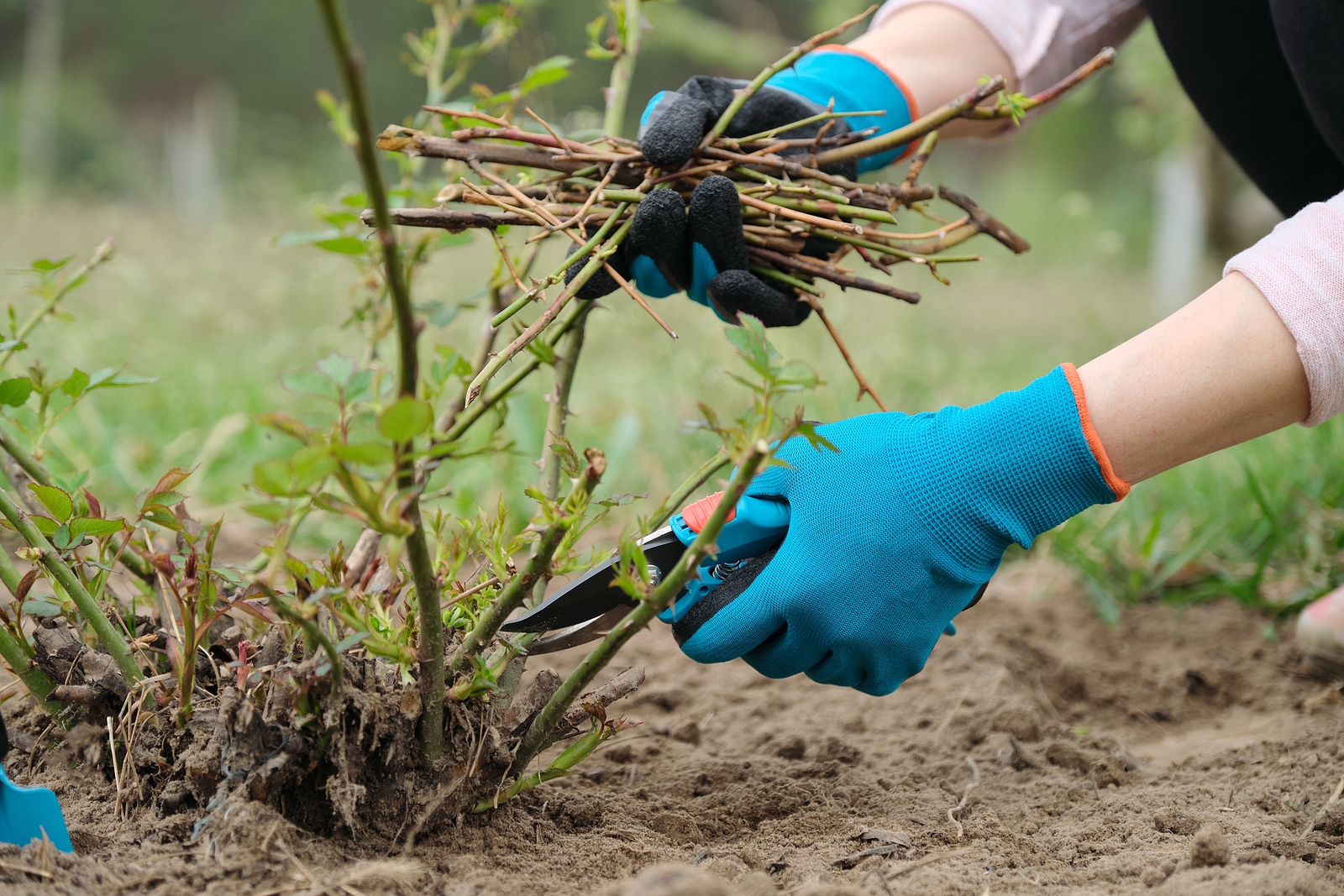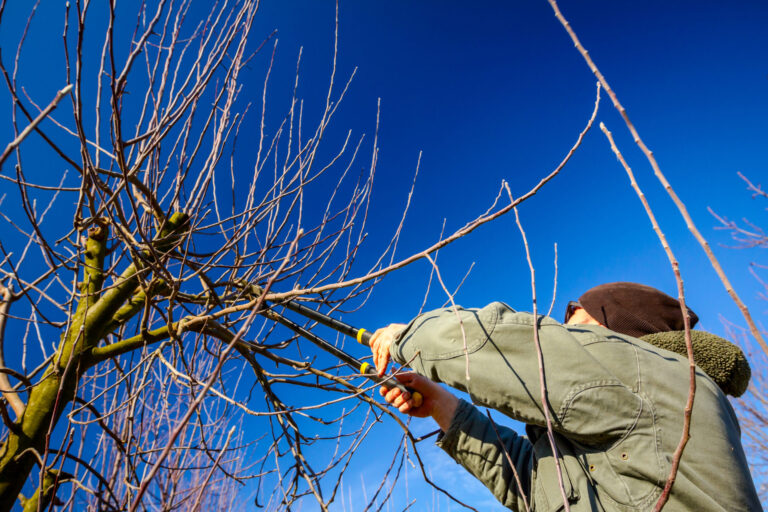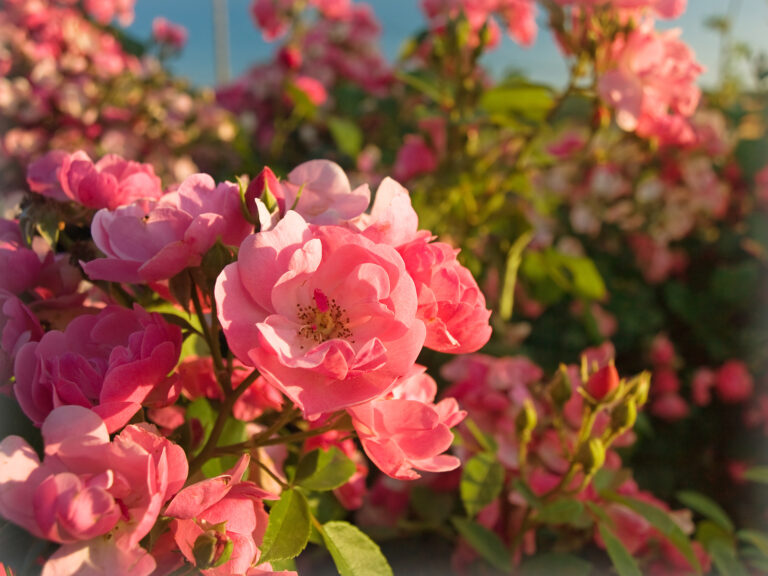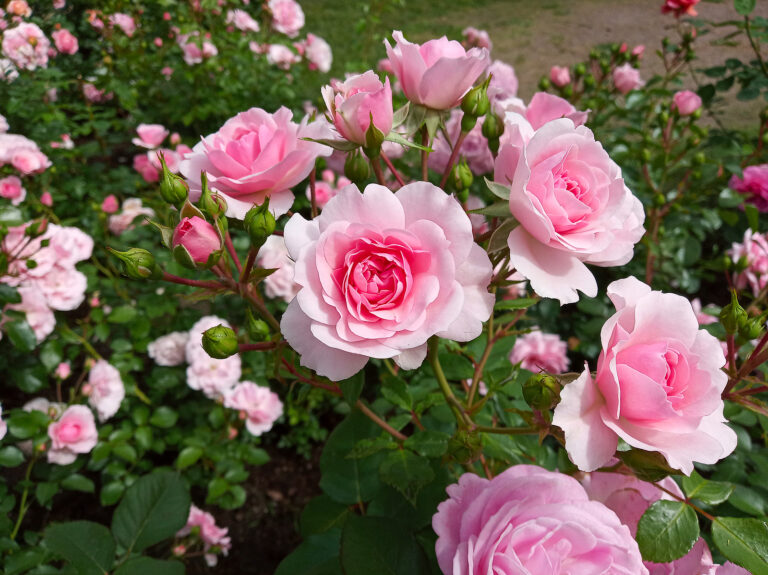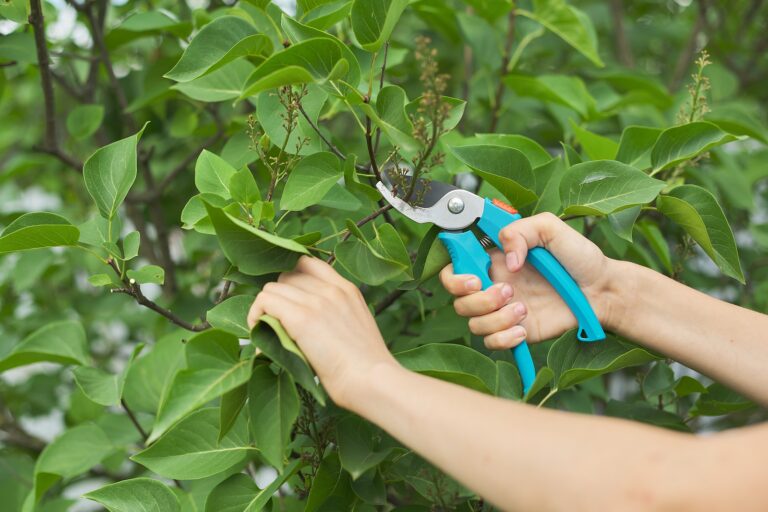How to Prune Roses
Prune roses to direct growth outwards in an even fashion. Prune to keep the center of the rose open so air can circulate and prevent disease.
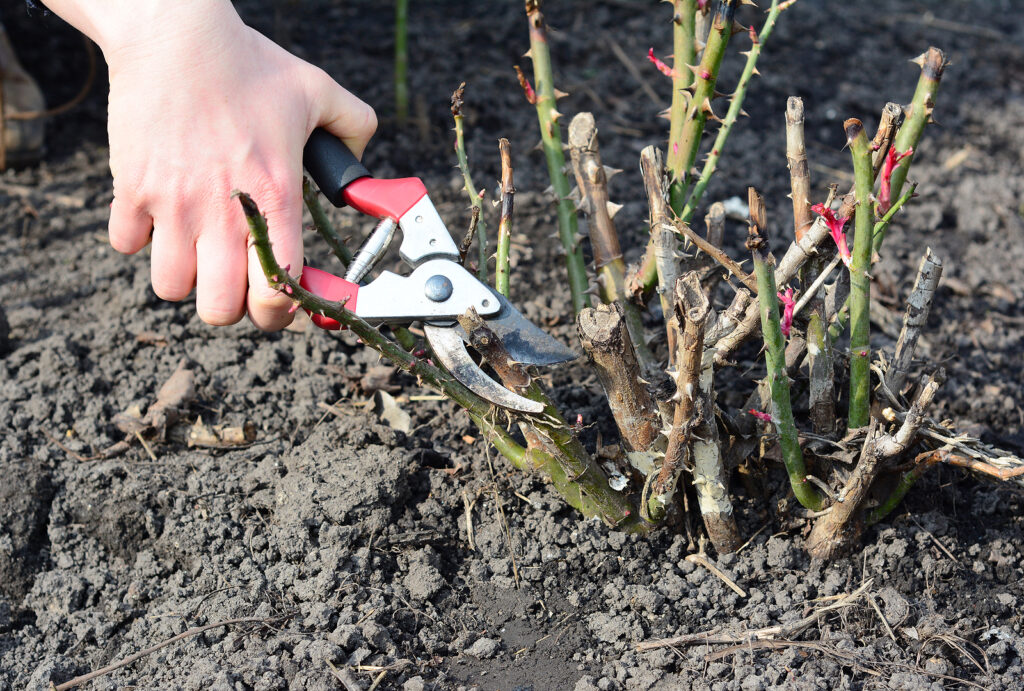
When to prune roses
Prune roses in late winter or early spring just as red leaf buds begin to appear on stems. Buds will turn into news stems and leaves.
Most roses bloom on new wood, which is new green stems that form in spring. A few rose types, some antique roses, climbing roses, and rambling rose, bloom on old wood—that is the wood form in previous years. If the cane is bright green; it is new wood. If the is dark green or gray-green it is old wood.
Roses that bloom on new wood should be pruned hard in late winter or early spring; a hard pruning will trigger new green growth for blooms this year.
Roses that bloom on old wood should be pruned lightly after they bloom, usually in late summer or autumn. This will give them time to generate more wood for the next season’s blooms.
If you prune a rose that blooms on old wood in spring, you may not get blooms that season, but you will likely get blooms the following season.

How to prune a bush rose
Prune out all dead or diseased wood; this wood will be black or dark gray, healthy rosewood will be deep green. When you make a cut, check the pith at the center of the stem or branch; if the pith is white and firm, it is alive; if the pith is black or grey or dry, it is dead.
Prune away any branches that are rubbing or crossing. Prune away the weakest or thinnest of the two. Prune away other thin or spindly growth.
Choose six canes to keep. These canes should be as thick as a pencil and they should be evenly spaced and facing outwards from the center. The stems when cut should give the plant a vase-like form. Cut these canes back to a height of 1 to 3 feet depending on how high you want the rose bush to be. As a rule, cut the canes to about one-fifth the desired mature height.
Each pruning cut should be at a 45-degree angle ¼ inch above an outward-facing bud. This will assure the new growth will grow outward and upward away from the center of the bush. This creates a nicely shaped bush with an open center that allows for better air circulation; the plant will be less susceptible to disease.
Do not use a sealer on the cut; pruned roses will heal on their own.
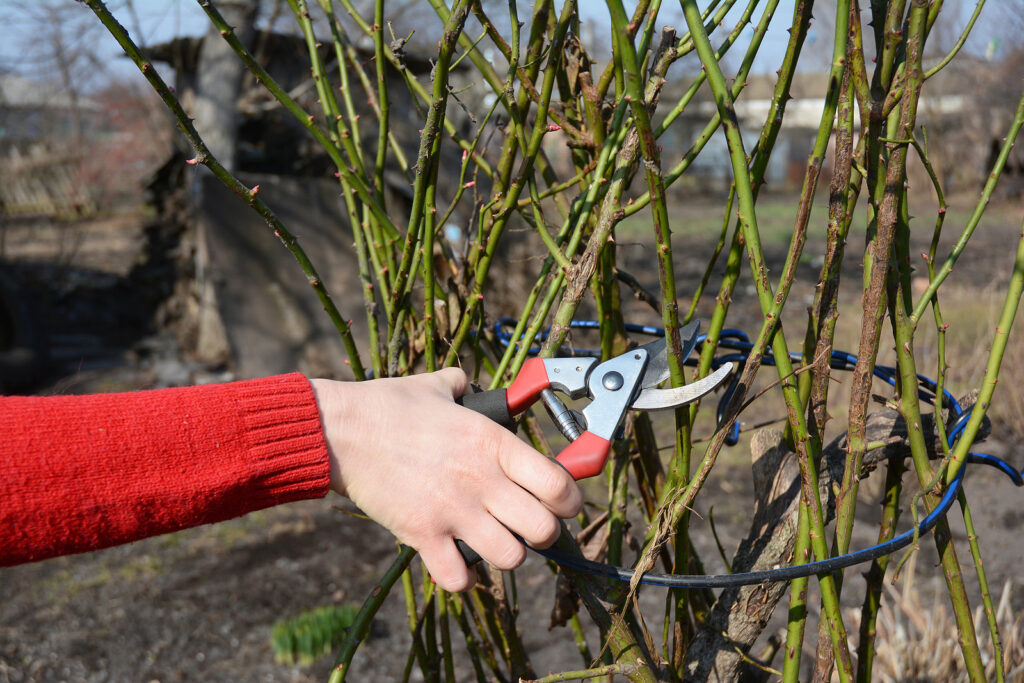
How to prune a climbing rose
A climbing rose with small flowers (about the size of a bottle cap) is called a rambler. Ramblers can grow up to 20 feet in a season. They should be pruned to keep them from growing wild.
Prune ramblers once a year after they finish blooming; ramblers bloom on last year’s growth—unlike most bush roses. After blooming, cut back canes by about one foot; this will encourage rapid new growth to bloom on next. Ramblers should be tied to a trellis or fence.
Most climbing roses with large flowers bloom on new wood, which is new green growth generated in the current season. Climbing roses with large flowers should be pruned in late winter or early spring while they are still dormant
Prune climbers much as you would bush roses; remove dead and diseased wood, remove crossing or rubbing branches, and remove spindly growth. Make your cut above several sets of five-leaved leaflets that are upward and outward-facing; this will encourage new stem growth away from the center of the plant.
The canes of all climbing roses should be tied into a trellis or support.
As the rose grows, prune as needed to shape it and control its height.
Pruning roses in mild-winter regions
Where winters are mild, a rose may not lose all of its leaves. This can make pruning a rose less obvious.
If leaves have not been killed back by winter cold, cut back shrub roses and hybrid tea roses to 2 to 4 feet tall. Cut the branches of climbing roses back to where the wood is slightly thicker than a pencil; then cut each side stem that has flowered back to the lowest possible five-leaflet stem, about 1 to 2 inches from the side cane; this will result in blooming along the length of the cane.
As much as possible train climbers and ramblers horizontally; this will encourage more vertical branches to grow up from the horizontal branches resulting in many blooms.
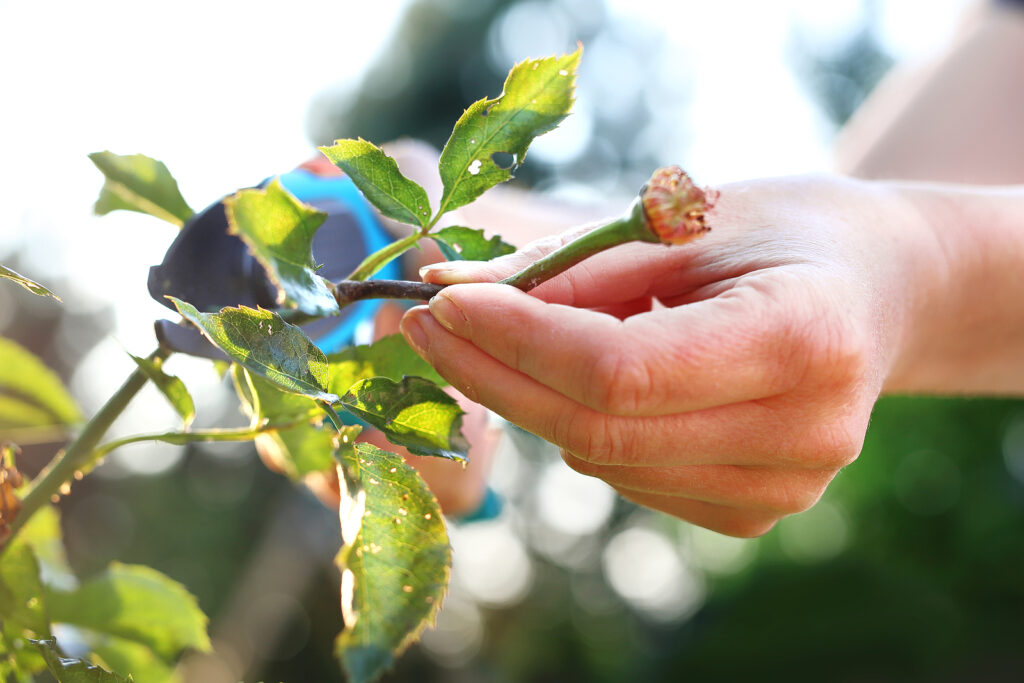
Deadheading
When cutting a rose stem for display or removing spent blossoms, make the cut just above a leaf with five leaflets facing away from the center of the bush. This will ensure new growth will point outwards.
Tools to use
Use a bypass prune. A bypass pruner will make a clean cut.
Do not use an anvil pruner or a pruner with a dull blade; these will crush plant tissue allowing for pests and diseases to enter the plant.
For long branches, use a pair of loppers. Loppers can cut stems from ½ to 1 inch thick and sometimes more. If a lopper can not make the cut, use a pruning saw.
Wear a heavy pair of gloves. Rose gloves extend above the wrists and protect the forearms from thorns.
Use rubbing alcohol or a weak bleach solution and paper towels to sanitize pruner blades after each cut; this will prevent the spread of disease.
Also of interest:

